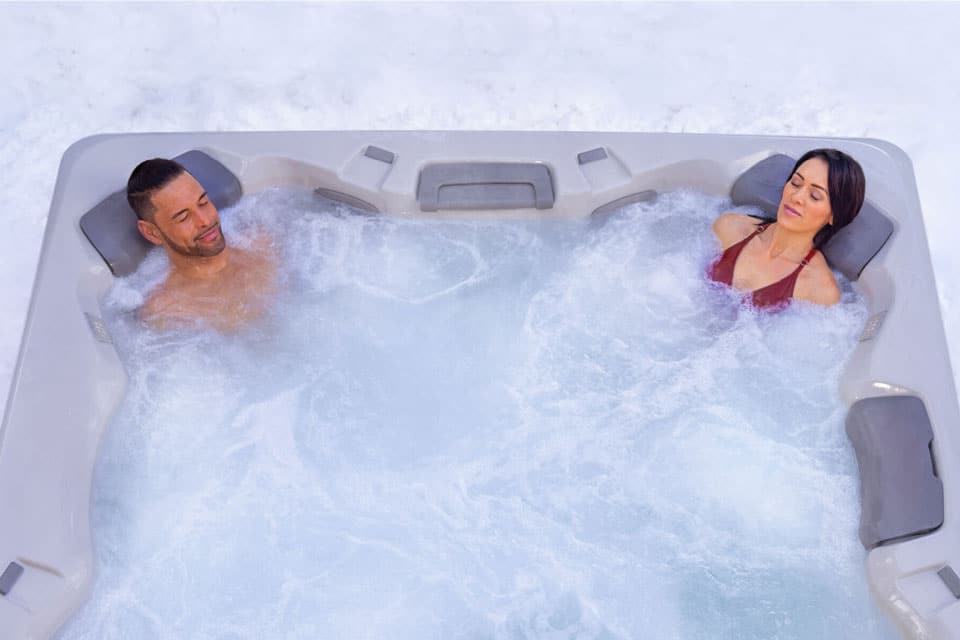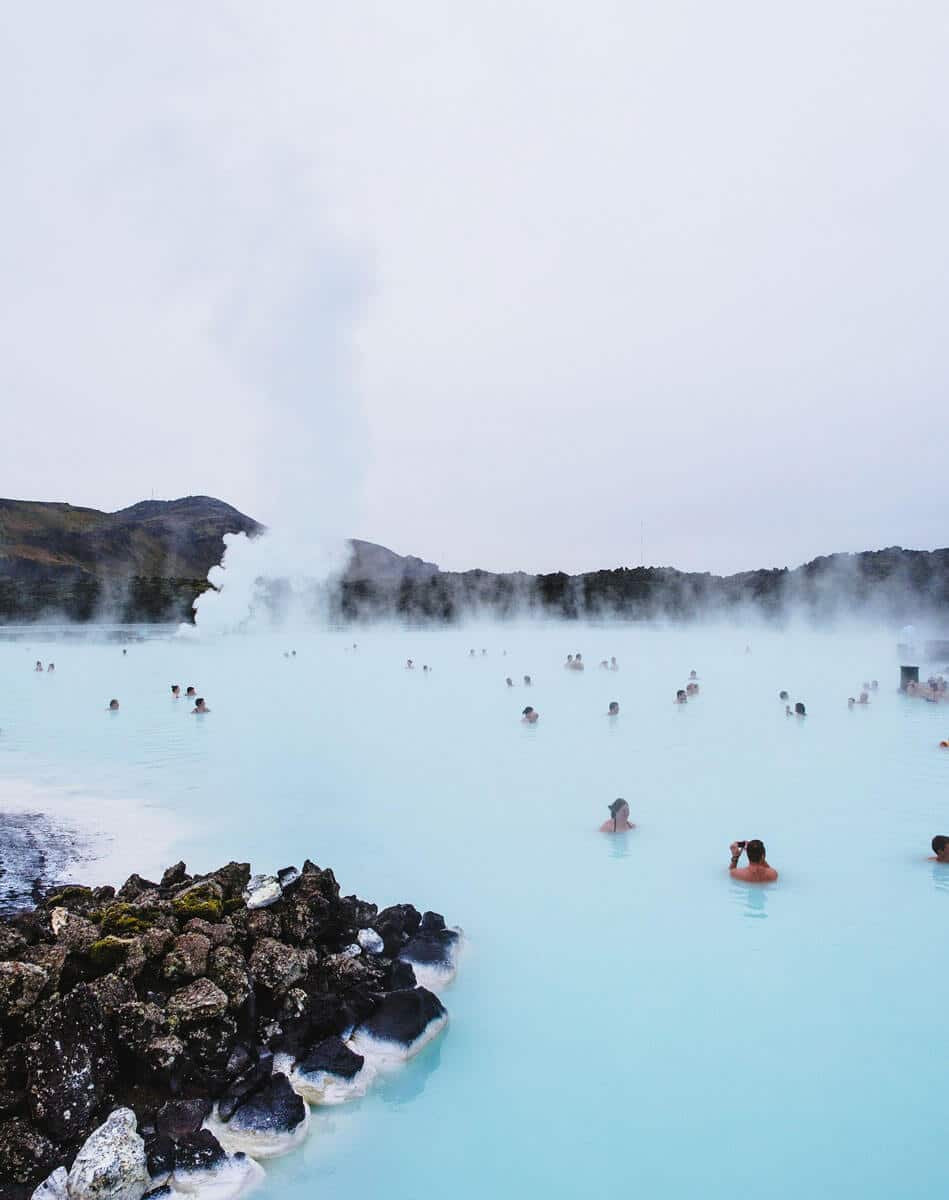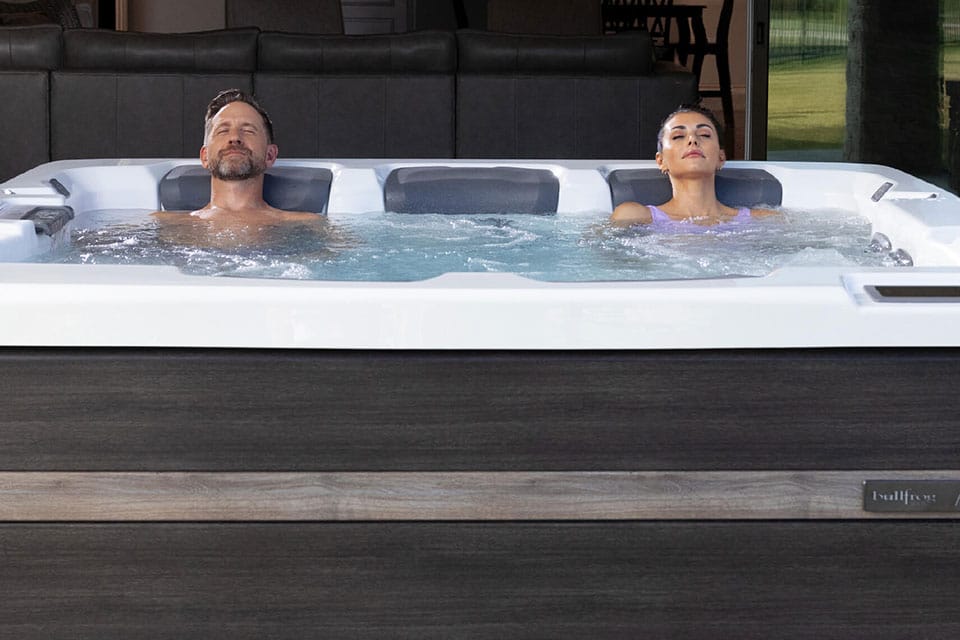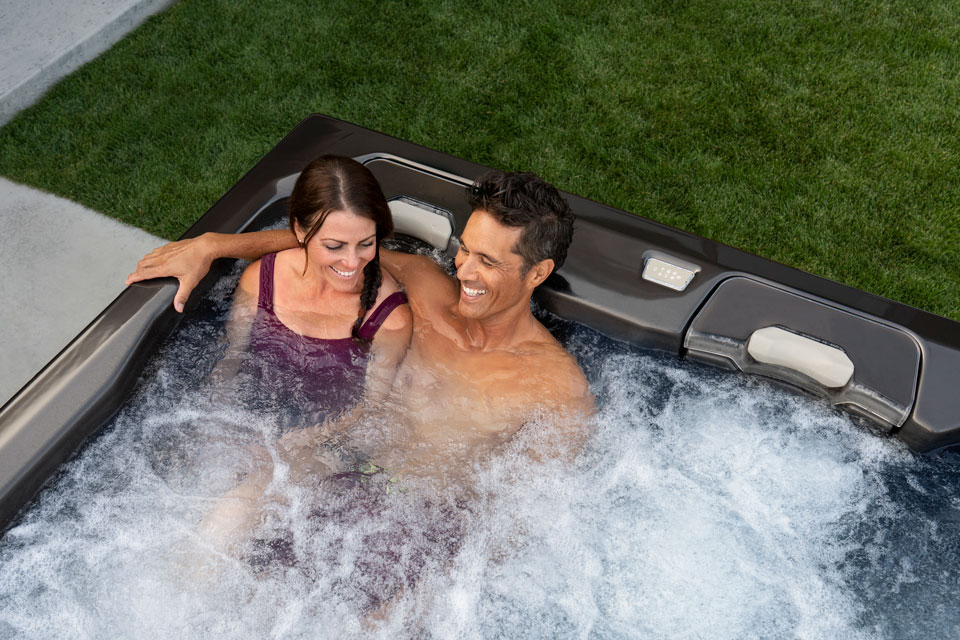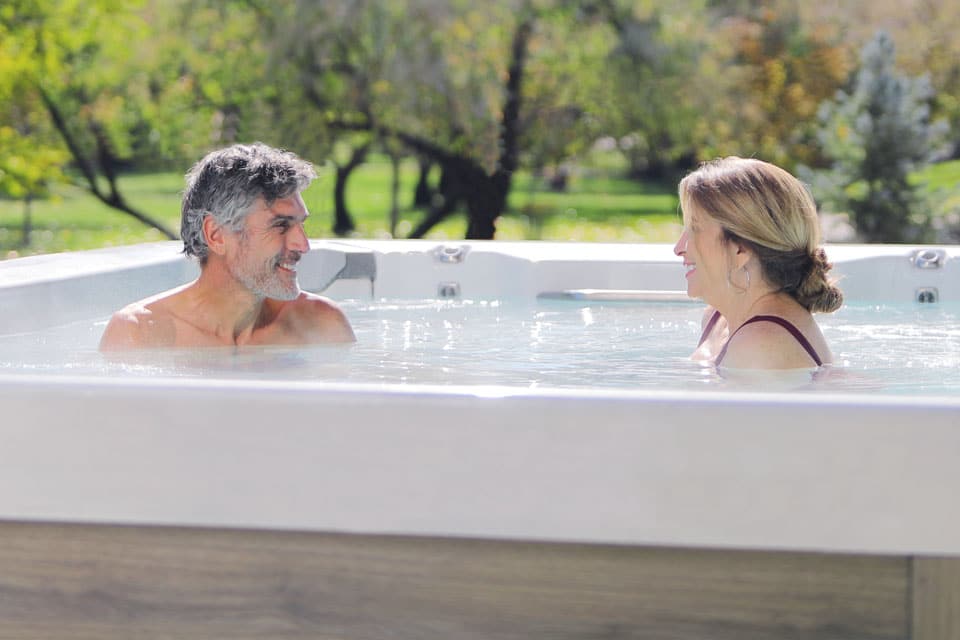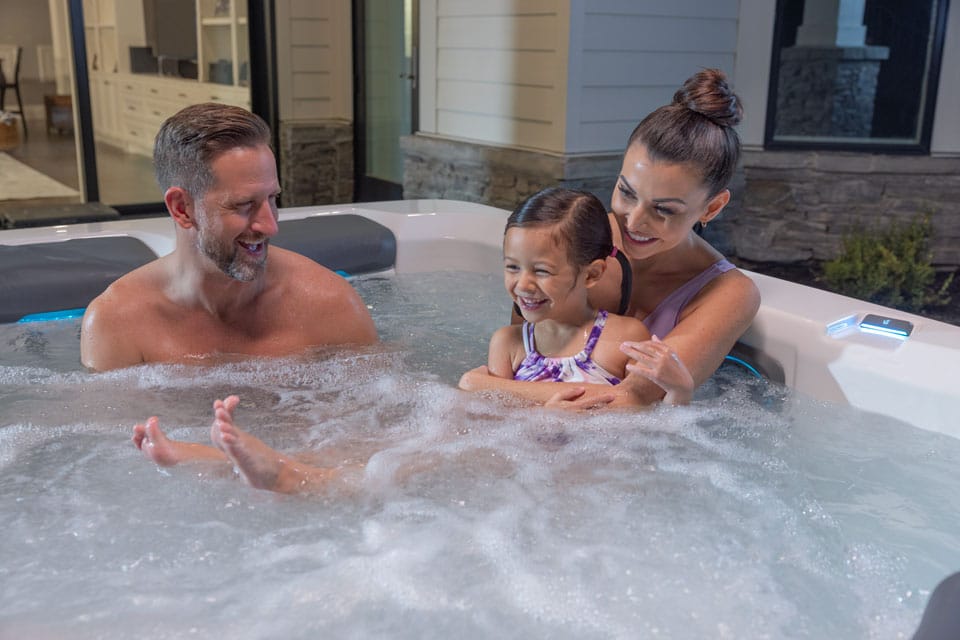[vc_row css_animation=”” row_type=”row” text_align=”left”][vc_column][vc_column_text]For millions of people around the world, stress is a silent problem impacting their health, happiness, and daily routine. The 2015 Stress in America study showed that stress levels of Americans continue to rise year over year. Not surprisingly, adults reported that stress has a negative impact on both their mental and physical health. And most feel they’re not doing enough to manage their stress.
The problem here is not just the number of people suffering, but the confusing and often contradictory suggestions to navigating stress management options. Commonly discussed stress relief methods range from counseling and mediation to exercise and diet changes. But one of the most effective yet enjoyable ways to reduce stress is with the often overlooked concept of hydrotherapy.
The mission in this post is to recognize what stress is and its impact on our health, then breakdown the essence of hydrotherapy and techniques that have proven to alleviate both situational and longer-term chronic stress.
Browse to a specific category by clicking on any of the quick links below:
| Water Immersion | Aquatic Exercise | Massage Therapy |
| Hot and Cold Compresses | Steam Treatment | Purifying Mineral Baths |
What is Stress?
Before you make a plan to deal with your stress, it’s important to understand what it is exactly. Up until the last few decades, not much was known about stress as a health condition. The idea of stress wasn’t even talked about in the medical community until a physics researcher in the early 20th century, Hans Selye, coined the term to describe the physical and mental strain more and more people seemed to be experiencing. Today, stress is defined as a feeling of tension as a result of outside circumstances.
Stress can be caused by a number of outside forces and life circumstances. Common situational stressors include the death of a loved one, loss of a job, a divorce, an injury, or a big move. Chronic stress can commonly be a result of workplace issues, anxiety-related conditions, or even just pessimistic personalities.
Health Problems Related to Stress
Though considered an entirely normal reaction in some situations, stress can too often be devastating to the body and one’s overall happiness. The most common symptoms people feel when more stressed out than usual include headaches, insomnia, fatigue, moodiness, problems concentrating, and stomach issues. For short-term stressful situations, these symptoms may come and go. As the feeling of stress dissipates, the person may start to feel better and back to normal.
Chronic untreated stress, however, causes more havoc on the body, including episodes of depression, anxiety, weight changes, high blood pressure, skin problems, and cardiovascular concerns. Instead of ignoring stress, a better plan is to confront it and look for ways to feel better.
Health Benefits of Stress Relief
Not only will you feel more like yourself when you address your stress, but you may also see significant improvements in your overall wellness. Regular stress relief can help you feel more vibrant and energetic. Being relaxed can also improve heart health and high blood pressure. Stress relief has also been shown to boost the body’s immune system and lower the risk for getting a cold.
Recommended Hydrotherapy for Stress and Tension Relief
One of the most popular vessels to use for stress relief is water. For thousands of years, humans have been fascinated by the water in the world. Fresh water is an essential need for anyone’s survival, and the search for clean drinking water has been a chronic struggle for most societies up until recent times. Water as a healing source has also been an important part of ancient medicine. The use of holy water in spirituality, natural hot springs for wellness and calming ocean water for vitality has been part of history for centuries.
Water in all of its forms, such as liquid, steam or ice, continues to be a therapeutic method of helping people feel better during stressful times in life. Hydrotherapy is a popular and effective way to help people ease life’s stressors. Research has shown a link between starting hydrotherapy and seeing a decrease in a person’s depression or anxiety levels. The idea of hydrotherapy originated in the 19th century with Sebastian Kneipp’s water therapy practices designed to rid the body of toxins. Now, different types of hydrotherapy are widely used to treat many different medical ailments or chronic issues, such as stress.
Water Immersion
Pain can be a major factor that causes stress in a person’s life. As people age, pain becomes a more common issue some may have to face. Chronic arthritis, sore muscles, and joint problems can be lessened with an effective warm-water hydrotherapy routine. The study on Biophysiologic Effects of Warm Water Immersion reported that “circulation to deep muscle structures is increased significantly in water immersion, improving oxygen flow to tissues and potentially facilitating healing of muscle, bone, and joint injuries.” Another study found warm water immersion resulted in an 11% decrease in systolic blood pressure and diastolic blood pressure. The study also found those who soaked in a hot tub for 10 minutes had “increased feelings of well-being and decreased state anxiety.”
A common method of conducting hydrotherapy for stress or pain relief is with different water temperatures. There are therapies that focus on using cold water, hot water, or a combination of both. Cold water hydrotherapy helps increase the body’s blood circulation, which can be an instant relief for stress or pain. Cold water can also be a welcoming relief during the heat or throughout a difficult time in life. Some hydrotherapy experts recommend that patients try cold water showers to experience the benefits of the cool temperatures.
Another hydrotherapy technique utilizes hot or warm water. Heat can be a powerful tool when combined with water therapy to help the body recover from a stressful situation or manage a chronic stressor. Heat can help the body’s muscles feel more relaxed or reset the body’s hormone levels. Some hydrotherapies use a combination of cold and hot water in sequence as a contrast therapy to help cleanse the body of stress and worry.
Aquatic Exercise
Adding exercise to your daily schedule is another method of managing stress and feeling better. According to a study by NCBI, hydrotherapy can help improve the cardiovascular system and hypertension. Though it was once believed that hydrotherapy increased the risk of heart failure, research now shows cardiac function improves during aquatic therapy due to an increase in the amount of blood getting pumped to the heart.
An aquatic workout routine is a gentle way to ease the body into exercise without putting additional strain on the joints or muscles. In most cases, aquatic routines begin in a pool, either at a standard temperature or at a therapeutic higher heat temperature for maximum stress relief. Another reason why aquatic exercise offers such a great workout is because of how water offers the body natural resistance. Working out in water can help the body get more toned and build more lean muscle without putting too much strain on the bones. Some examples of popular exercises to try in the water for stress relief include the following:
- Deep Water Walking – Using water noodles, swim to the deep end of the pool and begin completing a walking or running motion.
- Aqua Aerobics – If you love dance aerobics, you can get a totally new workout by trying aqua aerobics. Most water aerobics classes take place in the shallow end and employ water weights for additional toning opportunities.
- Water Weight Workout – For this workout, you’ll need a set of specially designed water weights for the pool. Simply do regular reps of common free weight exercises to give your muscles some resistance training.
- Lap Swimming – Swimming is also an effective method of getting the heart rate up and exercising your stress away.
You May Also Like:
New Research: Hot Tubs Improve Nervous System and Physical Health
Massage Therapy
Other than exercise, water can also be helpful to eliminate stress if it’s combined with massage therapy. According to The Franklin Institute, “Massage releases endorphins that calm the peripheral nervous system.” Research over the last couple decades has documented significant improvement to stress reduction and the physiological symptoms associated with stress with the application of multiple methods of massage. Enough so that 63% of adults who discussed massage with their healthcare providers were referred to a therapist or strongly recommended to get massage therapy by their provider. Even the Mayo Clinic “identifies massage as a valid medical method to reduce stress and pain.”
When it comes to water and massage, an Italian study in the journal Minerva Cardioangiologica found hydromassage to be effective treatment for venous deficiencies due to the water’s hydrostatic pressure, thermal, and chemical properties. Jets in higher quality hot tubs are often positioned to reach the same pressure points typically used in reflexology and acupressure, mimicking the pulsation action and deep-kneading techniques used by trained masseuses to achieve stress and tension relief. If you live in an area with a facility that offers massage in the water, you may also have access to a heated therapeutic pool and therapist who works on your muscles under the water’s surface.
Hot and Cold Compresses
While many hydrotherapy techniques involve immersion in a pool or spa, there are also methods of stress relief that use cold and hot compresses. Science explains that heat reduces stress by relaxing muscles and improving blood circulation while cold simply reduces the sensation of pain. Healthcare professionals have used hot and cold compresses to treat stress-induced ailments like migraines and sore muscles, in addition to a number of more general conditions including chronic dry eyes and kidney disease. Therapists and other providers make the compress by soaking a towel or other piece of cloth in heated or chilled water. The material is then applied to the desired area of the body to create a soothing effect.
Of course, compresses can also be made and applied at home to help get the benefits of this centuries-old treatment. Here are a few you can try either hot/heated or cold/frozen when on your own:
- Rice-filled sock
- Water bottle
- Bag of frozen veggies or the old-fashioned slab of meat
Steam Treatment
Some therapists are getting great results with their clients by using steam as a way to help achieve ultimate relaxation and reduce stress. According to the School of Medicine and Public Health at the University of Wisconsin-Madison, steam detoxifies the body and helps with muscle spasms, high blood pressure and seasonal affective disorder. The most common way to use steam for stress relief is in the form of a sauna or dedicated steam room. Sitting in a steam room can help cleanse the skin, open up the pores, and put someone into an ideal state of peace and rejuvenation. It’s also relatively simple to set up a steam room at home, by turning on a hot shower in a bathroom with the door closed.
Purifying Mineral Baths
Plain water can provide plenty of therapy on its own, but you can realize additional benefits by incorporating minerals such as Epsom salt into your bath. Aromatherapy, which uses the body’s sense of smell, is a great way to get the combination of a relaxing bath and nature’s most beneficial minerals. Lavender oil is a popular choice for those interested in general stress relief. The pleasing smell and its chemical compound instantly offer a soothing sensation that can provide relief in a variety of stressful situations. Lemon is another good choice for a purifying mineral bath because it’s been linked to helping increase concentration and the body’s sense of calm. A Japanese study even found yuzu citrus oil to diminish anxiety and stress levels while also decreasing heart rates.
For those who may be feeling a little down, many holistic practitioners consider jasmine oil a great additive to alleviate temporary sadness. When the oil combines with vapor from the warm bath, it can instantly impact the mind’s mood. German researchers even went so far as to declare jasmine to be as powerful a mood enhancer as valium. If you’re feeling tired or sluggish, add peppermint or cinnamon oils to your next late night soak for a quick boost of energy and focus.
How Does Hydrotherapy Help With Age?
Getting old is inevitable–feeling old is not. As bodies age, they become susceptible to weakening joints, muscle fatigue, and a host of cardio-respiratory conditions. However, as scientists are learning, regular hydrotherapy and aquatic exercise increase vitality and provide relief from the symptoms of aging. The results of these studies are encouraging, especially for seniors who still enjoy an active lifestyle.
For many retirees, warm water immersion therapy is advantageous because it’s self-regulated, often performed at home in a hot tub or bath. Experts recommend up to 20 minutes per day to achieve the best results. However, caution is advised to not overheat the tub. Ideally, water temperature should be between 92 and 100 degrees Fahrenheit to avoid cardiovascular risks.
Hydrotherapy, or water-based therapy, offers numerous benefits for improving flexibility, mobility, and overall physical rehabilitation. The buoyancy of water reduces the weight-bearing load on joints, making it an excellent option for those with osteoarthritis. By allowing gentle movement in a low-impact environment, hydrotherapy helps improve joint flexibility and reduce pain. This therapeutic method is also beneficial for those recovering from heart failure, as the warm water can enhance circulation and ease cardiovascular strain during exercise. For surgical rehabilitation, the supportive nature of water allows patients to engage in early mobilization, improving recovery outcomes while minimizing discomfort. The resistance provided by water also aids in strengthening muscles, further enhancing mobility and flexibility. Overall, hydrotherapy is a versatile treatment that supports recovery and improves quality of life across various conditions.
Recommended Hydrotherapy for Retirees
Hydrotherapy has come to encompass many different techniques and methodologies that it can be difficult to define. Generally, it refers to a form of exercise or stretching in warm–though sometimes cold as well–water. That being said, here are some of the less known hydrotherapy techniques that have garnered attention over the years–albeit with varying success.
As a young man, Sebastian Kneipp suffered from tuberculosis and was unable to join the priesthood. Determined to cure his ailment, he turned to water for treatment. Legend has it, he rid himself of the disease through carefully targeted water therapy. The validity of this claim is up for debate, but Kneipp nevertheless discovered valuable and sound aquatic treatments.
Kneipp therapy is focused primarily on the flow and pressure of water on the body to encourage circulation. Most of the treatments utilize cold water; however, there are warm water immersion techniques in the Kneipp tradition which many find boost the cardiovascular system, soothe aches and pains, and induce relaxation.
Hydromassage Therapy
Though less recognized among scientific communities, the merits of hydromassage therapy have accrued significant anecdotal support over recent years. Hydromassage beds circulate warm water jets to apply pressure onto various points of the body. Limited studies have suggested that these treatments boost circulation, relieve muscle soreness, and increase range of motion.
Some of the most promising research suggests that submerged hydromassage therapy reduced discomfort and increased exercise tolerance in heart disease patients with postmyocordial infarctions. The treatments improved circulation and increased mobility, offering patients a better quality of life. In the study, the researchers discovered that, for over half of the trial group, the residual benefits lasted 12 months after treatment.
Steam Inhalation
Inhalation therapy is a disputed treatment associated with as many benefits as there are risks. Most of the evidence in support of the therapy is anecdotal, and recent research has pointed toward adverse health effects. Young children in particular are susceptible to steam burns in the lungs and throat if the treatment is not properly administered.
However, when cautiously utilized, steam inhalation does have purported respiratory, dermatological, and circulatory benefits. Saunas, hot tubs, and other “steamy” environments are often safer than direct inhalation, yet still produce the desired results.
Heat Wraps
Wet wrap therapy has demonstrated to be an effective dermatological and pain management treatment for certain patients. In heat wrap therapy, wet, heated compresses are applied to an afflicted area of the body. One study suggests that heat wraps are an effective treatment for localized wrist pain. In the trials, researchers recorded significant pain decreases and improved grip strength among the subjects.
Wet wrap therapy has had a more extensive history in dermatology. However, these treatments are still experimental and not fully understood. In 2015, researchers conducted a study to explore the physiological response to wraps in patients suffering from skin conditions. They concluded that, though more research was needed, wet wrap therapy allowed the skin to secrete harmful toxins that cause eczema and other afflictions.
Regular hydrotherapy sessions, whether guided by a professional or enjoyed in the comfort of your home, offer a powerful way to alleviate the daily stresses of adult life and support healthy aging. Managing stress becomes increasingly important for maintaining both physical and emotional health. Embracing hydrotherapy not only relaxes your body but also rejuvenates your mind. By regularly releasing stress and nurturing your well-being, you can unlock a greater sense of vitality, empowering you to be the best version of yourself and paving the way to a deeper, more sustained happiness throughout your life.
Become a Hot Tub Expert
Subscribe to learn more about either buying or maintaining a hot tub and we’ll send you everything you need to know.
